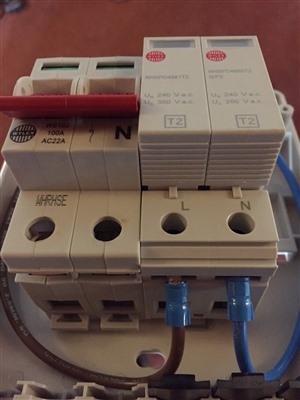Hi all,
I bought one of these for the first time today for a job I have coming up. I was suprised when I opened it up to find the SPD linked to the isolator by just 2.5mm wires, as these are the factory connection I guess this is the norm but I was suprised all the same! Why so small? I was expecting a copper busbar!
Thanks,
Will


